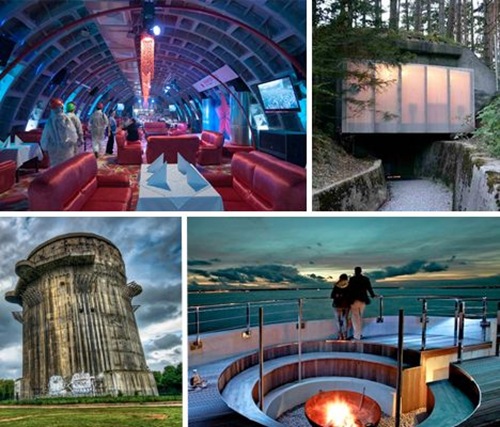
Once they were no longer needed as bunkers, flak towers, forts, airfields and barracks, these military structures sat empty and abandoned, a stark reminder of wars past and those that may occur in the future. But these structures were built to last, and now they serve surprising purposes - like climbing walls, aquariums, hotels, apartment buildings and night clubs.
1. Flak Towers in Germany - Climbing Walls
Flak towers constructed in Germany and Austria on Adolf Hitler’s orders during World War II have been reclaimed as climbing walls, music schools, shops, nightclubs and even an aquarium. These extremely strong structures were built to counter airborne Allied forces, with concrete walls three meters thick. Their size and durability made them difficult to destroy after the war, and many stood empty and abandoned for decades. Climbing equipment enables visitors to scale the 47-meter-tall (154-foot) Haus des Meeres in Vienna; it was once crowned with a Wurzburg radar dome, and now contains thousands of sea creatures, including a 300,000-litre shark tank.
2. Airship Hangar - Water Park
The world’s largest freestanding building is an airship hangar built at an abandoned Soviet military base just south of Berlin. Measuring 1,181 feet long and 688 feet wide, the structure was created for the delivery of massive industrial machinery like wind turbines, but a Malaysian firm has converted it into something much more fun: a water park. Tropical Islands Resort contains a 3,000-square-yard swimming pool, 600 feet of sandy beach and 50,000 trees in 600 varieties.
3. Russian Bunker - Night Club
The 75,000-square-foot Taganskaya Protected Command Point in Russia was in military use from the 1950s to 1986, when it was abandoned. But in the early 2000s, a company purchased the disused subterranean space and transformed it into a Cold War Museum called Bunker 42, which includes a restaurant and night club.
4. Torpedo Facility - Private Residence
A former Cold War torpedo facility in a London suburb, once used to test submarine technology, is now a stunning round home. The structure once boasted a 160-foot-diameter dome covering a 120-foot-long, 15-foot-deep pool where model torpedoes and submarines were rotated on a large arm up to 150 feet per second. The domed structure had to be removed due to contamination, but the home still features a 4-foot-thick blast wall.
5. 19th Century Gasometer - Apartment Building
A 19th-century gasometer that was also used as an air raid shelter during World War II is now a luxury apartment building. The Fichte-Bunker in Berlin held gas for the city’s street lamps, but when they were switched to electricity in the 1920s, it was no longer needed for this purpose. The walls were reinforced with up to three meters of concrete for its use as a shelter, and 30,000 people allegedly took refuge there on February 3rd, 1945 despite its capacity of 6,000. Once the war was over, it was used as a homeless shelter for decades, and then held emergency supplies for the Cold War. The structure now holds thirteen two-story luxury condos with large grassy upper-level terraces.
6. World War II Airbase - Single Family Farmhouse
You probably wouldn’t guess from looking at it that this ordinary-seeming farm in the English countryside was once an airbase and shelter for a U.S. Air Force bombardment group during World War II. The farmhouse itself is new, but it stands next to barracks that now serve as functional additions to the home.
7. Nuclear Fallout Shelter - Null Stern Hotel
Enjoy all the comforts of a nuclear bunker at the Null Stern, a ‘zero-star’ hotel in Teufen, Switzerland. The hotel was conceived as an art installation, and was briefly functional as novelty lodging before it became a museum in 2010. Guests who paid just 6 pounds (roughly 9 dollars) per night to stay there were given hot water bottles to fend off the cold and a pair of earplugs to block out the noise of the ventilation system. They slept in military-style bunks, and entered a draw to decide who got to take a hot shower in the morning.
8. Cold War Bunkers - Bat Caves
43 grass-covered Cold War bunkers in Maine that sat empty for years are now part of the Aroostook National Wildlife Refuge, and two of them have been given a cool new purpose: they’re artificial caves for bats. The bunkers were altered to provide a suitable habitat for 30 brown bats brought in from Vermont and New York; the idea was to protect them from caves contaminated with White-Nose Syndrome, which has killed 6.7 million bats throughout North America. Though many of the bats returned to their caves, and ultimately died, nine survived; the experiment demonstrated that bats can survive in artificial hibernating spaces.
9. Civil War Fort - Tourist Spot
A disused Civil War fort just a ferry ride away from urban Boston is now a tourist destination. Fort Warren was constructed in 1847 on an island that had been used for agricultural purposes for centuries, and was supposed to be the main line of coastal defense, but proved obsolete by the time it was dedicated. It was used as a training ground for soldiers for a century, but abandoned in the 1940s. A historic preservation purchased it a few years later. Georges Island remains a dark and crumbling place, the subject of rumours about hauntings, so it’s easy to see why visitors are keen to spend a day picnicking on the grounds and feeling their way down pitch-black hallways.
10. British Sea Forts - Luxury Resorts and Hotels
Abandoned British sea forts have been adapted for all sorts of strange uses, not the least of which is the Principality of Sealand, which has been claimed (though not officially recognized) as the world’s smallest micronation. One of those forts, which is over 100 years old and was decommissioned in 1982, is now a luxury island resort. The Spitbank Fort Hotel features exposed brick walls, fortress windows and cannons as well as a rooftop hot tub, sauna, sun deck, champagne bar, wine cellar and library. It’s only reachable by boat or helicopter, and rooms go for US$565 per night.
11. Bunker - Waterside Landmark
An abandoned military bunker in the Netherlands has been cut in half as part of a tourist attraction along the New Dutch Waterline. The area was in use from 1815 to 1940 as a strategic military zone protecting nearby cities like Utrecht, and includes nearly 700 structures. Rietveld Landscape designers sliced away the centre so visitors can walk right through the centre of it on their way down to the water.
12. Germany World War II Bunkers - Apartment Buildings
Architect Rainer Mielke has built a career on transforming some of Germany’s 2,000 disused military bunkers into modern, affordable apartment buildings. Mielke got the idea after cycling past a World War II bunker on his way to work each day and wondering what could be done with it. Laws prohibit renovating the entire interiors of the structures, so they can still be used for emergencies, so Mielke and his team build the flats on the upper levels and roofs, keeping the lower floors free.
13. Switzerland Cold War Bunker - Cultural Centre
This structure was entirely forgotten when a park ranger stumbled upon it deep within the woods of Switzerland. Now, the former military cable car station is a modern cultural centre, transformed by local architects Atelier-f.
14. Albanian Bunker - Restaurant
Albania is strewn with over 700,000 ‘concrete mushrooms,’ little four-person bunkers that were never used for their intended purpose of providing shelter for residents during the years of Communist rule. The vast majority of them are abandoned, but some have been reclaimed by local residents for all manner of uses, from tattoo parlours to restaurants.
15. Yorkshire Bunker - Women’s Museum
A disused bunker in Yorkshire, England could become a space honouring the role of women in war. Designer Charlotte Wilson envisions the RAF Bempton bunker as a peaceful seaside museum jutting out of a cliff, with various spaces in the museum focusing on past, present, reflection and remembrance, and future.
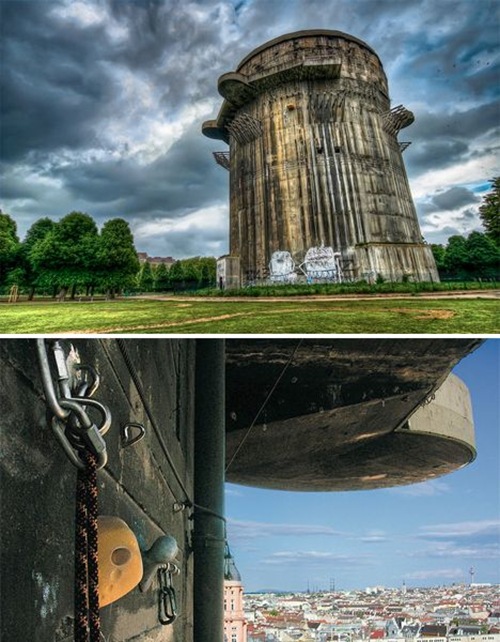
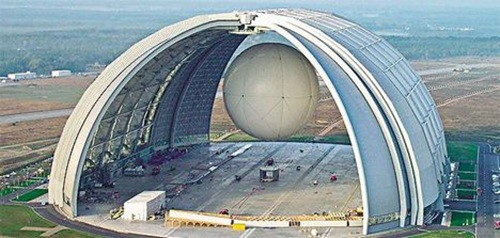

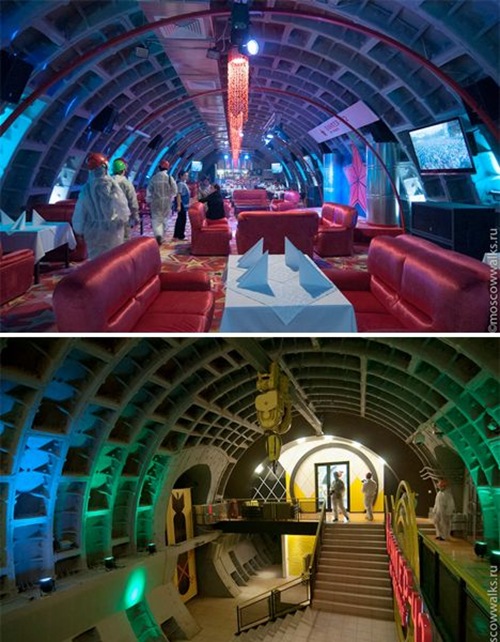
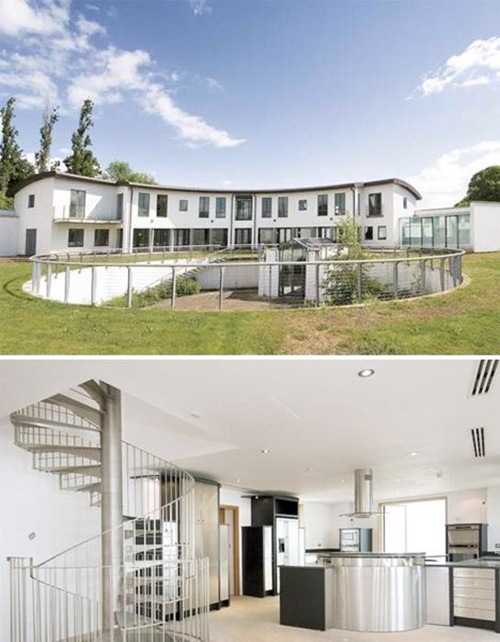

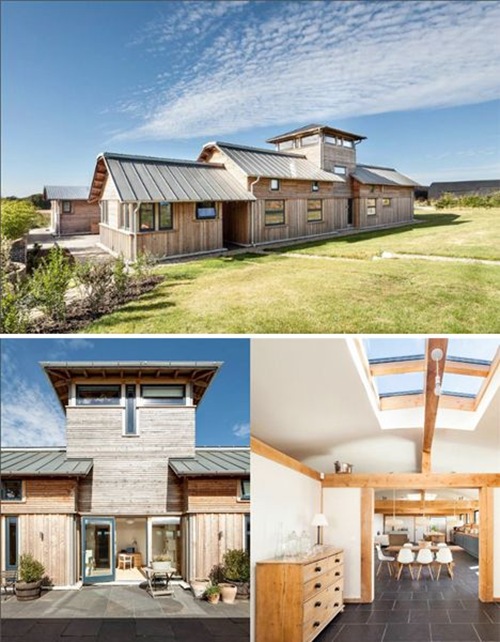
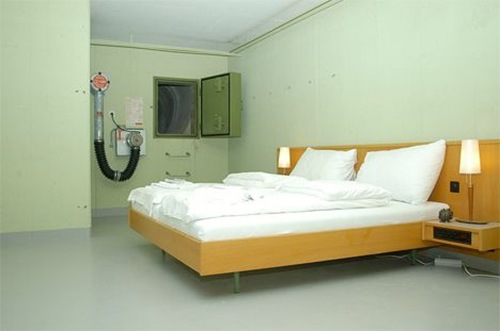
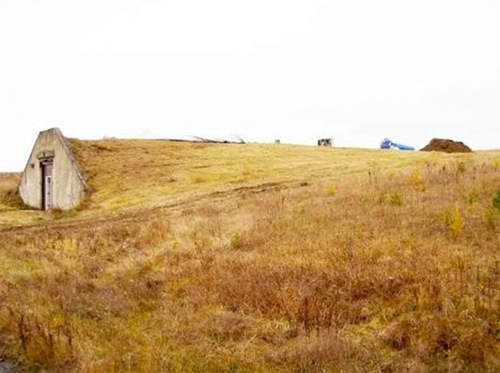
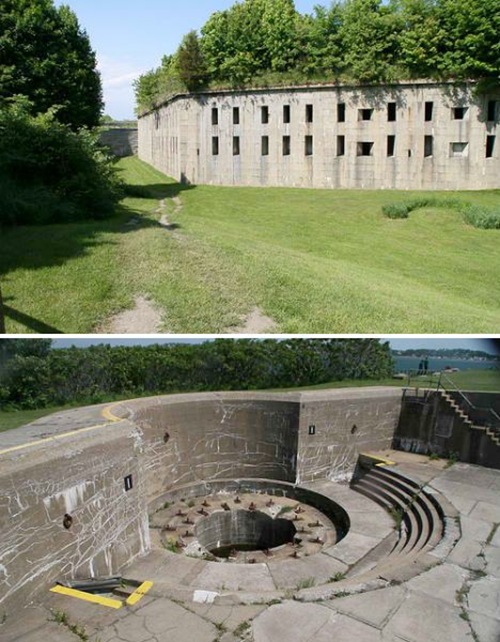
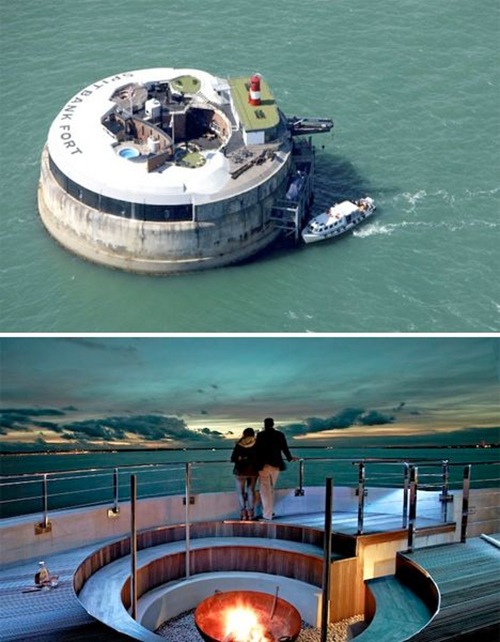
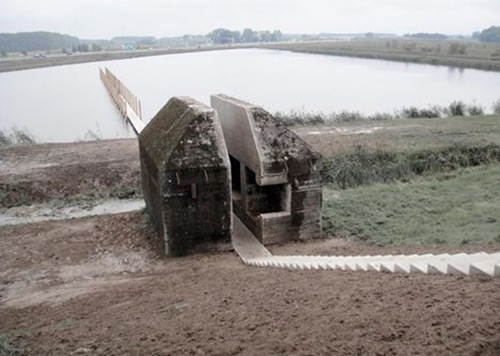
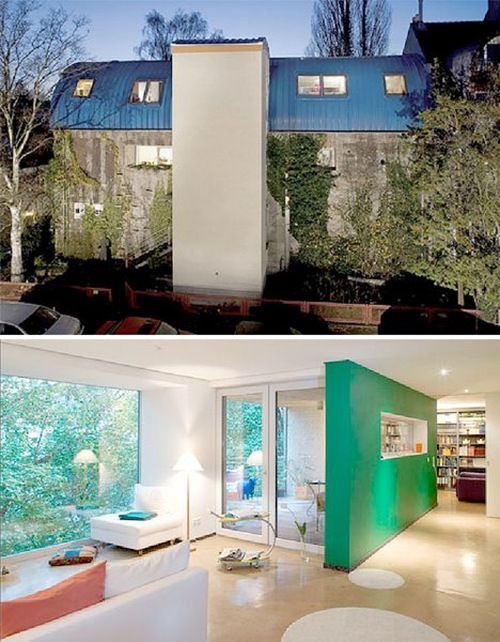
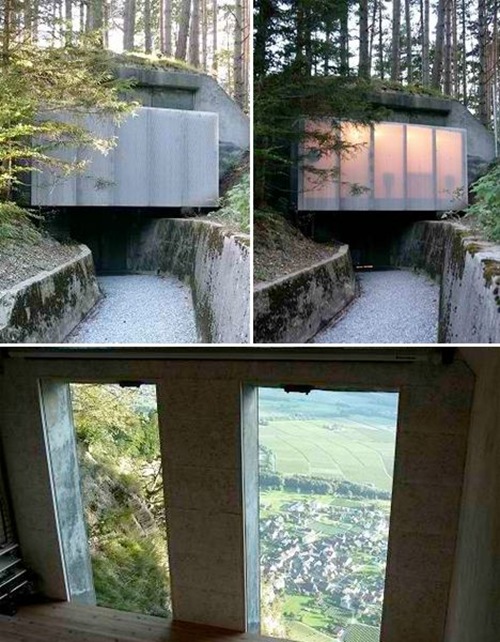
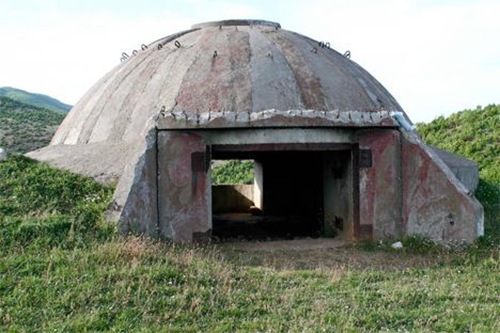
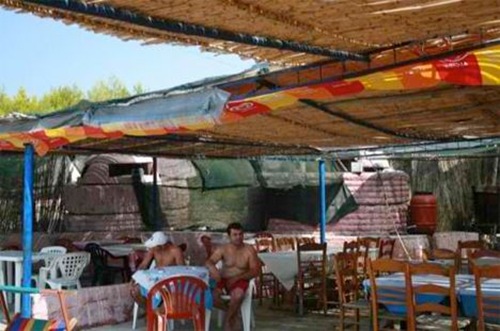
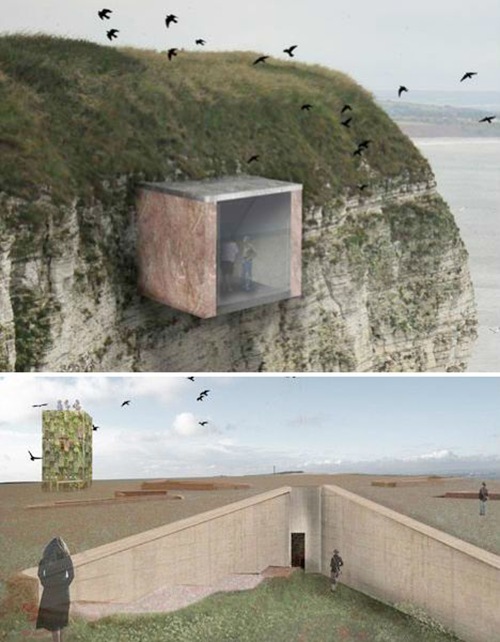
No comments:
Post a Comment
Please adhere to proper blog etiquette when posting your comments. This blog owner will exercise his absolution discretion in allowing or rejecting any comments that are deemed seditious, defamatory, libelous, racist, vulgar, insulting, and other remarks that exhibit similar characteristics. If you insist on using anonymous comments, please write your name or other IDs at the end of your message.